- The Tech Behind Run-Flat Tyres
- 5 Awesome Reasons Why You Should Buy a Lamborghini
- Hook Loaders and What to Consider When Buying One
- A Look at Teen Car Accident Statistics: Getting Your Teen to Drive Safe
- Kids In Car Accidents: How to Keep Kids Safe In the Car
- Things all new drivers must remember
- Golden Tips to Make Your Classic Car Last Longer and Save Value
- How To Choose the Car Cushion That Worth Money
- The driver’s guide to safety
- 11 Cool Motorcycle Accessories Every Biker Needs
آخرین مطالب
امکانات وب
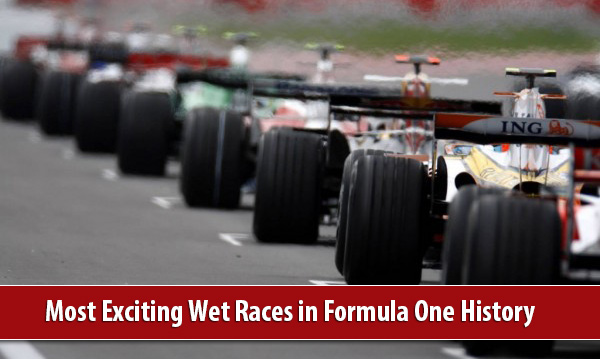
Rain has always been one of the factors that made a Formula One race even more exciting, especially because the difference between the cars’ performances is significantly reduced and on a track filled with water, all drivers have the chance to prove what they’re really made of.
In the last few years there have been a number of interesting wet races which provided a little drama but also showed FIA’s recent trend to neutralize races as soon as rain starts, by deploying the Safety Car or even waving red flags and pausing races until weather conditions improve. Of course, even though the races are not as entertaining as they used to be under these conditions, they are a lot safer for drivers. And proof is that we have 20 years without a single fatality in Formula One, the last one being the tragic death of legendary Ayrton Senna at Imola.
Despite these aspects, there are plenty of voices asking FIA to loosen up the safety measures and bring the sport closer to its origin, because there are countless examples of races that took place under incredibly difficult conditions and continued without the Safety Car’s intervention. And keep in mind that those were times when Formula One was an extremely dangerous sport, when cars’ and tracks’ safety was not the main concern.
So let’s take a look at some of the most difficult and best known wet races of the last century:
1961 German Grand Prix, Nurburging (won by Stirling Moss)
It’s well known that during a wet race, the inspiration to choose the proper tires is usually extremely important and decides who wins and who doesn’t. And at the 1961 German Grand Prix held on the famous Nurburgring track, inspiration “gods” chose Stirling Moss. The Brit qualified 3rd, behind Phil Hill and Jack Brabham and had a good start in the race, but so did Jack Brabham who immediately took the lead. However, Brabham crashed during the first lap, due to a problem with the throttle, and Moss took the lead, not giving up until the finish line. He finished 21 seconds ahead of Wolfgang von Trips and 22 seconds ahead of Phil Hill. The rain made the race quite difficult, with only 17 drivers finishing out of the total of 26 that started it.

Besides his driving, what really made the difference in this race was the way Moss dealt with the weather and the tires. During the race, the track dried enough for most of the drivers to make a pit stop and change their tires. But Moss stood on the track and stuck with his rain tires, anticipating that rain will start again. And he was right, because the rain came back and he wasn’t forced to make another pit stop, especially with his tires not getting too damaged after running on the dry track.
1963 Belgian Grand Prix, Spa-Francorchamps (Jim Clark)
The second race of the 1963 Formula One season was scheduled in Belgium and took place under extreme conditions. Besides the fact that it rained for most of the weekend, the track was also hit by a storm in the middle of the race.

Despite these rough conditions, Jim Clark offered one of the most impressive performances on a wet track Formula One has ever seen. He qualified only 8th, but he managed to overtake all the drivers in front of him, including Graham Hill, which had started in pole position and was leading the race (Hill retired on lap 17 due to a gearbox failure). To get an idea of how great Clark’s driving was it’s worth mentioning that he lapped every other driver, except for Bruce McLaren, who finished 2nd. And while McLaren managed not to get himself lapped, he finished the race almost 5 minutes (4 minutes and 54 seconds) behind Clark.
It was the first win of the season for the Brit and the first one in an impressive series of seven wins in 9 races, which brought him the World Championship after a season he dominated, scoring almost twice as many points as the second and third ranked drivers, Graham Hill and Richie Ginther.
1968 German Grand Prix, Nurburgring (Jackie Stewart)
The 1968 Formula One season started bad after it lost one of its greatest drivers ever, Jim Clark. The Brit, who had won the first race of the season in South Africa, died during a crash in a Formula Two event on April 7th. But the German Grand Prix offered an impressive race, which is widely regarded as one of the most difficult races ever held in Formula One. Conditions were extreme, with fog and heavy rain seriously affecting the track. There were even talks about canceling the race, but it was decided that the race should take place, so everyone was curious how drivers will deal with the 14 laps of the famous Nordschleife.After a qualifying session “soaked” in water, Jackie Ickx took the pole position, followed by Chris Amon, JochenRindt and Graham Hill.
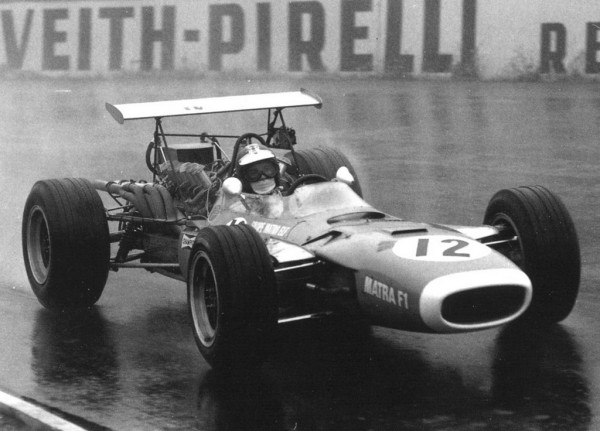
Jackie Stewart started in the 6th position but had an amazing first lap, overtaking all the other five drivers in front of him and finishing the lap with a 9 second lead over Graham Hill. By the end of the second lap, Stewart already had a 34 second lead and he finished the race with a final lead of more than 4 minutes. Most Formula One fans agree this was Jackie Stewart’s best race in his entire career, especially since he was driving with a broken wrist following a Formula Two crash earlier that year (he actually missed two Formula One races because of that injury). Unfortunately for Stewart, the two missed races took their toll and he lost the World Championship title to Graham Hill, who won his second title at the end of that season.
Speaking about this race, Jackie Stewart said: “The spray was absolutely unbelievable – I couldn’t see anything at all! I couldn’t see my braking distance marks; I couldn’t see the car in front; it was just a great wall of spray. I tried to get out of the spray and go up the inside, and by doing this I managed to see a little more clearly [..]I cannot remember having been more frightened in a racing car. The spray from Graham and Chris was just absolutely impossible to see through; on any other circuit these conditions are hellish, but on the Nurburgring you just cannot imagine how bad they are. The track is narrow, the undulations so pronounced, the bends so numerous, that you can hardly remember where you are on the circuit even on a clear day, but in fog and ceaseless spray you just have no idea at all.”
1972 Monaco Grand Prix, Monaco (Jean-Pierre Beltoise)
Today, FIA would probably exclude the idea of a wet race in Monaco, but in 1972 the possibility of postponing a race because of the weather was unthinkable.
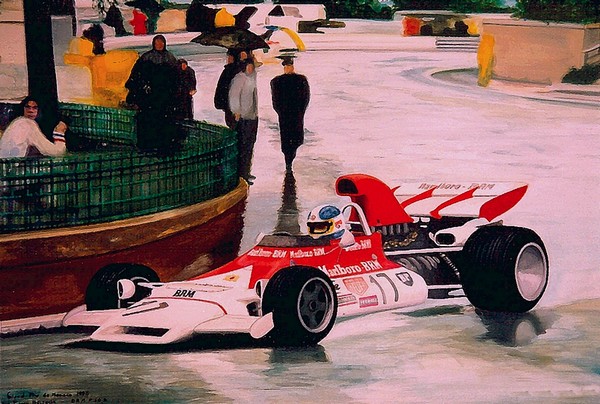
Denny Hulme and Emerson Fittipaldi had an identical run in the first three races of the season, each winning one race (Fittipaldi in Spain, Hulme in South Africa), finishing 2nd in one and retiring in another (Fittipaldi in Argentina with suspension failure and Hulme in Spain with a gearbox problem). Jacky Ickx was 3d with 10 points followed by Jackie Stewart with 9 points and Clay Regazzoni with 7 points. During qualifying, Fittipaldi set the fastest time and took the pole position, followed by Jacky Ickx, Clay Regazzoni and Jean-Pierre Beltoise. The Frenchman’s 4th position was quite surprising since he had failed to finish any race that season (he didn’t enter the first race of the season in Argentina and was forced to retire in South Africa and Spain by gearbox and engine problems).
In the race, everyone’s attention was turned to the favorites, but Beltoise had a great start, overtook all three drivers in front of him and took the lead, which he kept all the way to the finish line. More than that, he finished almost 40 seconds ahead of second place, which was taken by Jacky Ickx. The Frenchman was never one of the sport’s superstars and this win was his greatest career achievement. Actually, it was the only race in which he scored points that season, at the end of which Emerson Fittipaldi won the World Championship for the first time, but everyone will remember Beltoise for the amazing way he drove on a “soaked” Monaco circuit. This was also the last race that was held on the circuit’s original configuration, because starting with the 1973 season, the swimming pool was installed and the tunnel was lengthened. Also, it was the last race won by the British Racing Motors team (BRM), which started facing financial difficulties and was shut down five years later, in 1977.
1983 Monaco Grand Prix, Monaco (KekeRosberg)
Eleven years after Beltoise’s amazing race, the Monaco Grand Prix was once again facing heavy rain. This time, it was the fifth race of the season and the Championship was led by Alain Prost and Nelson Piquet with 15 points each, followed by Patrick Tambay with 14 points and John Watson with 11 points. After qualifying, Prost secured the pole position, Tambay in 4th position and Nelson Piquet was only 6th.
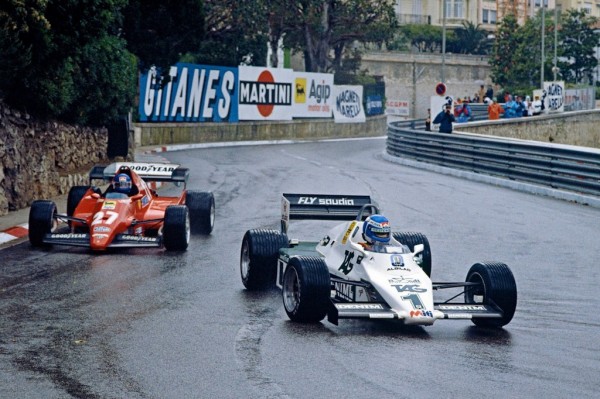
Today, each race that starts on a wet track begins with the Safety Car deployed and all drivers are required to start on wet tires. But back then these rules didn’t exist and the drivers had the freedom to choose whatever tires they wanted. That weekend, all of them went for wet tires except Jacques Laffite and KekeRosberg (Williams), who was the reigning World Champion and had qualified in 5th position (even though it was not a great position, it was the highest placed non-turbo car). The two drivers chose slicks because even though the track was wet, there was no rain. Of course, it was a risky decision but it proved to be an extremely inspired one for the Finn, who had a great start, advancing into 2nd position by the first corner and overtaking Prost for the lead in the first lap.
Rosberg led the entire race and finished with an 18 second lead over Nelson Piquet and 31 seconds in front of Prost. This win put Rosberg in 4th position in the overall standings, but the rest of the season was disappointing for the Finnish driver and, except for the Monaco win, his best result was a second place at the Detroit Grand Prix, so he finished the season 5th. The Championship was won by Nelson Piquet after a fierce battle with Alain Prost that lasted until the last race of the season. However, besides making an almost perfect wet race, Rosberg will also go down in Formula One history for another thing. Thirty years after his win, his son NicoRosberg won the 2013 Monaco Grand Prix, making them the first father and son to win the Monaco race.
1985 Portuguese Grand Prix, Estoril (Ayrton Senna)
1985 was Ayrton Senna’ second season in Formula One and his first one with Lotus-Renault. In the first race of the season, the Brazilian Grand Prix, Senna qualified 4th but was forced to retire after an electrical problem on lap 48. At the second race of the season, the young Brazilian driver started showing everyone what he was made of and in qualifying he took the pole position, his first one in Formula One. He was followed by Alain Prost, who had lost the World Championship to NikiLauda by just half a point the previous season and was eager to get his revenge.
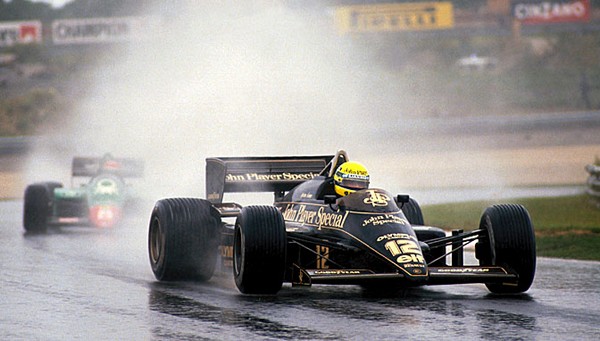
The wet conditions made the race incredibly difficult, but Senna, even though he was still a novice in Formula One, kept his calm and did a perfect race, finishing first, more than a minute in front of Michele Alboreto, who came in 2nd, and lapping every other driver, including future World Champion Nigel Mansell. And just to get an idea of how difficult the race was, only 9 drivers finished it, out of the total of 26 that started it. While it came as quite a surprise at the time, Senna will later become famous for his proficiency in wet conditions.
Despite Senna’s win, the rest of the season was dominated by Alain Prost, whose only title contender was Michele Alboreto, but the Frenchmen comfortably won the Championship by 20 points, after the Italian failed to finish the last five races of the season, all caused by Ferrari’s unreliability.
1993 European Grand Prix, Donington Park (Ayrton Senna)
The first race of the season took place in South Africa and was a very interesting race, with only 5 drivers (out of the total 26 finishing the race). It was won by Alain Prost, followed by Ayrton Senna. The two had won three World Championships each and everything pointed out to an extremely exciting season. The following race took place in Brazil, where Senna won and Prost retired, so everyone eagerly waited for the next race, the European Grand Prix held at Donington Park in the United Kingdom.
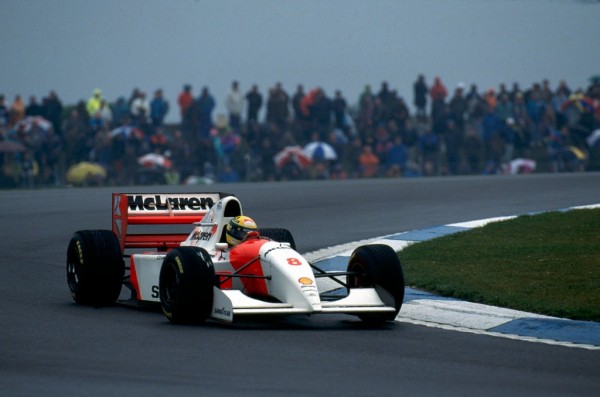
The qualifying session was dominated by the two Williams cars, with Prost taking the pole position, followed by Damon Hill. Michael Schumacher was 3rd and Senna only 4th. But what happened next was pure magic from the Brazilian, who showed everyone once again why he is considered one of Formula One’s legends. Rain was pouring over the track and at the start Schumacher had a problem and blocked Senna, both being overtaken by Karl Wendlinger. However, Senna began one of the greatest laps of his career. He first passed Schumacher in the third corner then Wendlinger followed. A few corners later, Senna overtook Hill and, on the penultimate corner, also passed Alain Prost, finishing the first lap as race leader.
The race was extremely tense, with conditions alternating between dry and wet, so everyone had to make several pit stops to change tires. After the second stop, Senna was delayed by 20 seconds and lost the lead to Prost. But rain started again and Williams decided to call in both drivers, while Senna stayed on the track. It was an inspired decision, because the rain stopped and the track started to dry again, forcing Prost to make another pit stop. The Brazilian won the race, lapping everyone except Damon Hill, who was 2nd, followed by Alain Prost in 3rd place. The Frenchman actually set a record for most pit stops made in a single race (seven), a record that still stands today. Unfortunately for Senna, despite winning the five races that season, he lost the title to Alain Prost, who was more constant.
1996 Spanish Grand Prix, Circuit de Catalunya (Michael Schumacher)
Schumacher had just won his second consecutive World Championship with Benetton when he joined Ferrari, in what will probably be one of the most important moves in Formula One history. However, despite the German’s immense talent, the beginning of the season was dominated by Williams and, after six races, Damon Hill was leading the championship with 43 points, having won four out the first five races, followed by Jacques Villeneuve with 22 points. Schumacher was only 3rd, with 16 points, failing to finish in three races, including the previous one in Monaco, when it rained before the race and where the German crashed in the first lap, despite starting the race from pole position.
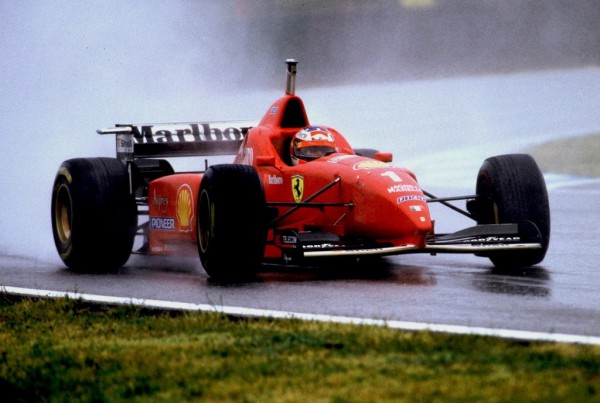
The two Williams seemed to continue their domination when Hill took the pole position and Villeneuve 2nd place, with Schumacher in the 3rd position. However, Hill didn’t really matter in the race, spinning twice in the first laps, before hitting a pit wall and retiring on lap 12. One lap later, Schumacher, who had a poor start, took the lead from Villeneuve and dominated the rest of the race, with several laps when he was three seconds faster than any other driver. The race was full of incidents and only six drivers finished it, out of the 20 that started. Alesi came in 2nd place, 45 seconds behind Schumacher and the 3rd place went to Villeneuve.
Despite this great win, the 1996 season was a poor one for Schumacher, finishing 3rd overall, 38 points behind Damon Hill, who became World Champion. But everyone will remember the race in Barcelona and even though people knew how good the German was on a wet track, after this race he got the “Rainmaster” nickname.
1998 Belgian Grand Prix, Spa-Francorchamps (Damon Hill)
While the other races we listed above were impressive by the manner of which the winners drove, the 1998 Belgian Grand Prix is special from another point of view, being a decisive round in the battle for the World Championship title. With three quarters of the season gone, Mika Hakkinen led the drivers’ standings with 77 points, followed by Michael Schumacher with 70 points. The German was coming after an excellent race in Hungary, which he won, closing the gap to Hakkinen, who only finished 6th.
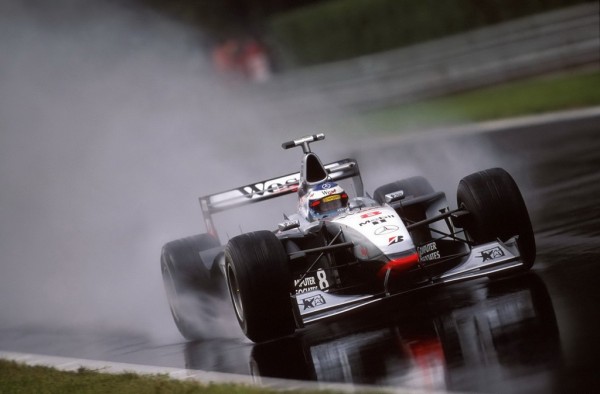
At the thirteenth race of the season, held at Spa-Francorchampsin Belgium, Hakkinen took the pole position, followed by team mate David Coulthard, and Damon Hill, with Schumacher qualifying only 4th. On race day, the weather was extremely rainy and this pleased Schumacher, who was known as a driver that wasvery skilled on a wet track.
At the start, David Coulthard caused a massive incident and the race was restarted, without four drivers who had damaged their cars.This time, Damon Hill had a better start and passed Hakkinen, who was also trying to resist Schumacher. But in the first corner, the Finn lost control of the car and was hit by Johnny Herbert, with both of them being forced to retire. The Safety Car was deployed to allow Hakkinen’s car to be removed from the track and eight laps later Schumacher overtook Hill and started to build up an impressive lead. At this moment, things were going perfect for the German, with Hakkinen out and him comfortably leading the race, it meant that he was now three points in front of the Finn in the drivers’ standings.
Around lap 25, Schumacher was behind Coulthard, with the Scot having to move over to allow the German to pass. To make sure there would be no problems, Ferrari’s Jean Todt went to the McLaren pitwall and talked to the British team. But Coulthard didn’t allow Schumacher to pass right away, irritating the German Champion. When he eventually did, he slowed down but didn’t change the lane. Schumacher, who was behind heavy spray and had basically zero visibility, didn’t see Coulthard slowing down, so he violently hit the Scot’s McLaren, tearing off his Ferrari’s right front wheel. The two cars were seriously damaged and both drivers were forced to enter the pits (the Ferrari lost a wheel and was unable to continue, while Coulthard got back into the race after the McLaren’s rear wing was replaced). Schumacher immediately rushed to the McLaren garage to blame Coulthard for the collision and even accusing the Scot of trying to kill him. The two solved their conflict a couple of weeks later and, years later, Coulthard admitted that it was his fault, since it was extremely imprudent of him to slow down when he knew Schumacher was right behind him, in heavy spray.
Unfortunately for Schumacher, he missed a huge opportunity to take the Championship lead from Hakkinen. He was also extremely unlucky in the last race of the season, the Japanese Grand Prix, when he took the pole position but had to start from the last position because his car stalled right before the start. Despite that, he managed to make his way up to the 3rd place when one of his tires blew up and forced him to retire once again, ending all hopes of winning his third Championship and making Hakkinen World Champion for the second time.
2000 German Grand Prix, Hockenheim (Rubens Barrichello)
The 2000 Formula One season was marked by the same rivalry between Mika Hakkinen and Michael Schumacher. Both had won two World Championships each, with the Finn being the reigning Champion and Schumacher hoping for his first title with Ferrari. The German driver did become World Champion (after the penultimate race of the season) and started the amazing five consecutive titles series, but one race in the season was extremely interesting, the German Grand Prix held at the Hockenheim track.
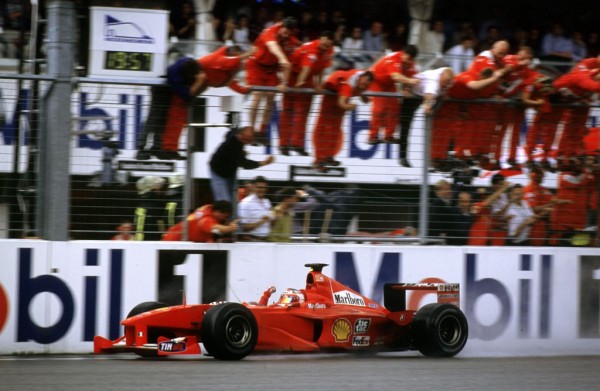
Before the race, Schumacher was leading the Championship with 56 points, followed by David Coulthard with 50 points, Mika Hakkinen with 48 and Rubens Barrichello with 36. And while everyone was waiting for the German Grand Prix to see what will happen next in the battle between Hakkinen and Schumacher, the big surprise came from Rubens Barrichello. The Brazilian had finished on the podium six times in the first 10 races, but was not exactly a favorite, especially after having some problems during qualifying and being forced to start the race in the 18th position.
Pole position was won by Coulthard, followed by Schumacher and Fisichella. However, the German and the Italian crashed before the first corner, both retiring, so it was time for Barrichello to shine. By lap 17, he was already 3rd and then, profiting from a mistake at McLaren pits, he took the lead. On lap 34, heavy rain started to fall, but the Brazilian continued his impeccable race, which was even more difficult as the Hockenheim track is known to be very long and while some parts of it were wet, others were dry. Hakkinen, who was 7 seconds behind Barrichello, was gaining time on the wet parts, as he had switched to wet tires, while the Brazilian was faster on the dry parts, as he didn’t pit for new tires and was running on slicks. Barrichello managed to protect his lead and won the race, 7.5 seconds ahead of Hakkinen, with the 3rd place going to David Coulthard. It was the Brazilian’s first win and he was extremely emotional, while everyone cheered for him. Formula One fans probably remember the famous image of Hakkinen and Coulthard raising him on their shoulders on the podium or the standing ovation he got before the press conference.
Like we said, we only listed races that happened before 2000, but it would be unfair not to mention some recent wet races that were also really exciting, such as Jensen Button’s first victory in Formula One, that happened on a wet track in Hungary 2006, Fernando Alonso great win in Nurburgring 2007 on heavy rain (when Markus Winkelkoch became race leader at his Formula One debut race) or Jensen Button’s win in Montreal in 2011, when he started 7th and made six pit stops.
car en...
برچسب : نویسنده : کاوه محمدزادگان caren بازدید : 257
آرشیو مطالب
- بهمن 1395
- اسفند 1395
- فروردين 1395
- ارديبهشت 1395
- خرداد 1395
- تير 1395
- مرداد 1395
- شهريور 1395
- مهر 1395
- آبان 1395
- دی 1396
- بهمن 1396
- فروردين 1396
- ارديبهشت 1396
- خرداد 1396
- تير 1396
- مرداد 1396
- شهريور 1396
- مهر 1396
- آبان 1396
- آذر 1396
- دی 1397
- بهمن 1397
- اسفند 1397
- ارديبهشت 1397
- آذر 1397
- دی 1398
- اسفند 1398
- ارديبهشت 1398
- مرداد 1398
- مهر 1398
- آبان 1398
- آذر 1398
- فروردين 1399
- خرداد 1399
- تير 1399
- مرداد 1399
لینک دوستان
- کرم سفید کننده وا
- دانلود آهنگ جدید
- خرید گوشی
- فرش کاشان
- بازار اجتماعی رایج
- خرید لایسنس نود 32
- خرید بانه
- خرید بک لینک
- کلاه کاسکت
- موزیک باران
- دانلود آهنگ جدید
- ازن ژنراتور
- نمایندگی شیائومی مشهد
- مشاوره حقوقی تلفنی با وکیل
- کرم سفید کننده واژن
- اگهی استخدام کارپ
- دانلود فیلم
- آرشیو مطالب
- فرش مسجد
- دعا
- لیزر موهای زائد
- هاست ایمیل
- رنگ مو
- شارژ
